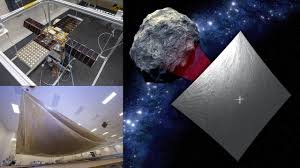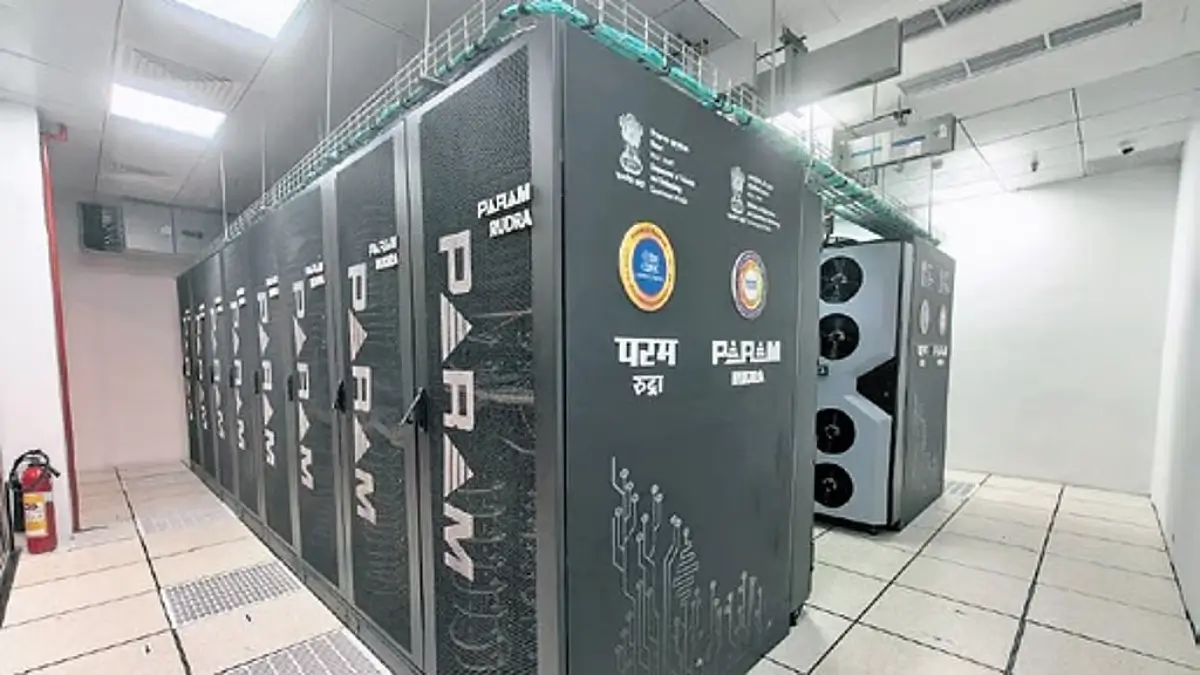NASA’s Solar-Powered Spacecraft Pioneering Solar Sail Technology
NASA, the renowned space agency, has once again made strides in space exploration with its latest innovative project involving solar sail technology. The agency has successfully launched a solar-powered spacecraft, marking a significant advancement in propulsion systems for future space missions.
The spacecraft, equipped with a pioneering solar sail, was launched into orbit aboard a Falcon Heavy rocket from the Kennedy Space Center in Florida. This revolutionary technology utilizes the pressure exerted by sunlight to propel the spacecraft forward, offering a highly efficient and sustainable means of propulsion in the vacuum of space.
The solar sail, comprised of ultra-thin reflective material, captures and reflects sunlight, harnessing its energy to generate thrust. This eliminates the need for traditional chemical propellants, making space travel more cost-effective and environmentally friendly. Moreover, solar sail propulsion enables spacecraft to achieve higher speeds over time, facilitating faster interplanetary travel and exploration.
NASA’s foray into solar sail technology holds immense promise for future space missions, including long-duration voyages to distant planets and beyond. By harnessing the power of sunlight, spacecraft equipped with solar sails can potentially explore vast regions of the solar system with unprecedented speed and efficiency.
This groundbreaking achievement underscores NASA’s commitment to pushing the boundaries of space exploration and fostering innovation in propulsion technology. As the agency continues to pioneer new frontiers in space travel, the possibilities for scientific discovery and exploration are limitless.

Why this News is Important
Advancement in Space Propulsion:
NASA’s successful launch of a solar-powered spacecraft represents a significant milestone in space exploration, showcasing the potential of solar sail technology as a viable propulsion system for future missions. This achievement opens up new possibilities for sustainable and efficient space travel, reducing reliance on traditional chemical propellants.
Exploration of Distant Worlds:
The utilization of solar sail technology enables spacecraft to travel farther and faster than ever before, paving the way for exploration missions to distant planets, asteroids, and other celestial bodies. This breakthrough holds immense promise for unlocking the mysteries of the universe and expanding our understanding of outer space.
Cost-Effective Space Missions:
By harnessing the power of sunlight for propulsion, solar-powered spacecraft offer a cost-effective alternative to conventional propulsion systems. This innovation could significantly reduce the financial burden of space exploration, making it more accessible and sustainable in the long run.
Environmental Sustainability:
Solar sail technology eliminates the need for chemical propellants, thereby reducing the environmental impact of space missions. By leveraging renewable energy from the sun, spacecraft can operate more sustainably in the harsh conditions of space, minimizing pollution and resource depletion.
Inspiration for Future Innovations:
NASA’s achievement in solar sail technology serves as inspiration for future generations of scientists, engineers, and innovators. By pushing the boundaries of what is possible in space exploration, this groundbreaking endeavor encourages creativity, curiosity, and collaboration in the pursuit of knowledge and discovery.
Historical Context
Solar sail technology has been a subject of scientific interest and exploration for decades, dating back to the visionary concepts proposed by scientists such as Konstantin Tsiolkovsky and Carl Sagan in the early 20th century. The idea of using sunlight as a means of propulsion in space gained traction in the 1970s with the development of the first practical designs for solar sails.
One of the earliest missions to demonstrate the feasibility of solar sail technology was NASA’s “NanoSail-D” mission in 2010, which successfully deployed a small solar sail in low Earth orbit. This proof-of-concept mission paved the way for further research and development in the field of solar propulsion, culminating in the recent launch of NASA’s solar-powered spacecraft.
In recent years, advancements in materials science and spacecraft engineering have made solar sail technology increasingly viable for practical applications in space exploration. The successful deployment of solar sails on spacecraft such as NASA’s “NEA Scout” and “LightSail” missions has demonstrated the potential of this innovative propulsion system for future interplanetary missions.
As humanity looks towards the stars with renewed enthusiasm and ambition, solar sail technology offers a promising pathway towards sustainable and efficient space travel. By harnessing the boundless energy of the sun, we can propel ourselves ever closer to the outer reaches of the cosmos, unlocking new frontiers of knowledge and discovery along the way.
Key Takeaways from “NASA’s Solar-Powered Spacecraft Pioneering Solar Sail Technology”
| Serial Number | Key Takeaway |
|---|---|
| 1. | NASA has successfully launched a solar-powered spacecraft equipped with a pioneering solar sail, marking a significant advancement in propulsion technology for space exploration. |
| 2. | Solar sail technology harnesses the pressure exerted by sunlight to propel spacecraft forward, offering a highly efficient and sustainable means of propulsion in the vacuum of space. |
| 3. | The utilization of solar sail technology enables spacecraft to achieve higher speeds over time, facilitating faster interplanetary travel and exploration of distant celestial bodies. |
| 4. | By eliminating the need for traditional chemical propellants, solar-powered spacecraft reduce the environmental impact of space missions and offer a cost-effective alternative for future exploration endeavors. |
| 5. | NASA’s achievement in solar sail technology underscores the agency’s commitment to pushing the boundaries of space exploration and fostering innovation in propulsion systems, inspiring future generations of scientists and engineers. |
Important FAQs for Students from this News
What is solar sail technology?
Solar sail technology utilizes the pressure exerted by sunlight to propel spacecraft forward, offering a sustainable and efficient means of propulsion in space.
How does NASA’s solar-powered spacecraft work?
NASA’s spacecraft is equipped with a solar sail, which is comprised of ultra-thin reflective material. When sunlight hits the sail, it exerts pressure, generating thrust and propelling the spacecraft forward.
What are the advantages of solar sail propulsion?
Solar sail propulsion eliminates the need for traditional chemical propellants, making space travel more cost-effective and environmentally friendly. It also enables spacecraft to achieve higher speeds over time, facilitating faster interplanetary travel.
What are the potential applications of solar sail technology?
Solar sail technology opens up possibilities for exploration missions to distant planets, asteroids, and other celestial bodies. It could also be used for long-duration voyages and deep space exploration.
How does NASA’s achievement in solar sail technology impact future space exploration?
NASA’s success in solar sail technology represents a significant milestone in space exploration, paving the way for sustainable and efficient propulsion systems in future missions. It inspires innovation and opens up new opportunities for scientific discovery beyond Earth’s orbit.
Some Important Current Affairs Links

















